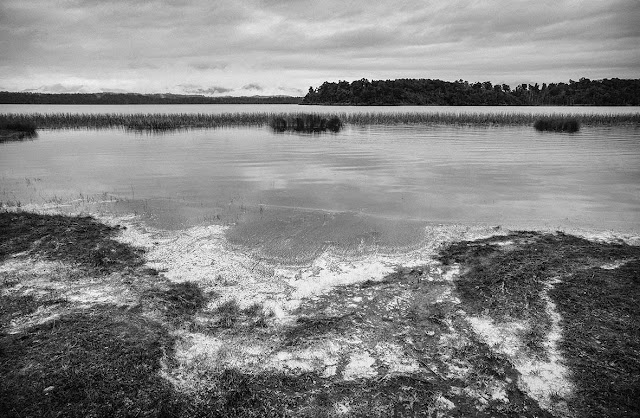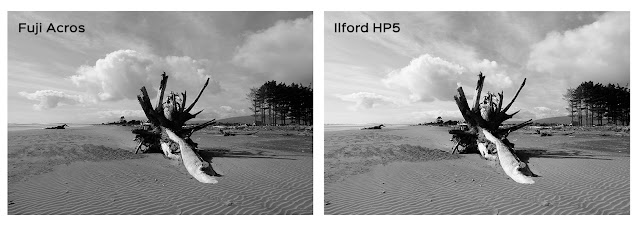My C6 Fujifilm custom film recipe: Ilford HP5
I've probably mentioned before (a few times) that when I shoot 'real' film, I often choose black and white. Firstly for practical and budget reasons - it's cheaper and I can develop it myself. But second for aesthetic reasons - I love the look you get from true black and white film stocks. Black and white conversions from colour are not quite the same. And nor is shooting on the 'monochrome' setting on DSLRs.
Now having said that, I believe that the closest you can get to a 'true' black and white result shooting on digital is with the Fujifilm simulations (without selling your children and a kidney to buy the Leica Monochrom). For a start, the newer X-Trans III cameras have the Fuji Acros film look built right into the camera - how good is that! But even if, like me, you've got an older generation Fujifilm body, then the custom film simulations come to the rescue.
I've programmed an Acros recipe into my X-E2 which I talked about here. But I also wanted an alternative 'look' to my black and white images - something with a little more contrast than Acros, but still suitable for general photography. Maybe something with a higher speed and a touch more grain?
Two stocks immediately spring to mind when I think of 'faster' films - Kodak Tri-X and Ilford HP5 - both ISO 400 rated films. I chose to go with an Ilford HP5 film recipe because I didn't have any other Ilford films represented in my custom list - and it's also the black and white film I have more 'real-life' experience with. I know that Tri-X is 'the' b&w film of choice for photojournalists who want a faster film they can push process - but Ilford HP5 is no slouch in this regard either. And I think that overall Ilford HP5 has a more pleasing tonal range than Tri-X. So Ilford HP5 is the film simulation I went for as my 'other' monochrome choice - in my 'C6' slot.
 |
| Down by the River, Hokitika. Fujifilm X-E2. f/8 @ 1/100th, ISO 400. Ilford HP5 recipe |
It being the weekend (as I write this), that's the time that I can get out and take photos. My wife and I had decided to drive to Hokitika, so she could meet with a friend, and I could go and take some photos. The forecast wasn't looking too bad - just overcast and grey. Perfect for black and white. And perfect to try out my Ilford HP5 film simulation.
Unfortunately, they got the forecast slightly wrong. It was grey alright, but it was also raining - quite steadily. I'm not a keen rain photographer, not withstanding the fact that my Fujifilm X-E2 and XC16-50mm lens aren't weather-sealed. So for the first hour I drove around in the rain, hoping that it would clear. It didn't look good, and I only really had a two hour window of opportunity to take some photos. Luckily the rain did clear for the last half an hour, and I did manage to get out and grab a few images using the Ilford HP5 film recipe.
 |
| Hokitika Bridge. Fujifilm X-E2 with XC16-50mm. f/8 @ 1/125th, ISO 400. Ilford HP5 recipe |
Although it was a fairly drab, dreary and rainy day, I'm very pleased with the results I got using the HP5 film simulation. While it might not have been my ideal conditions to shoot in, they are ideal conditions for black and white photography. And the Ilford HP5 recipe has made the most of it. Because of the overcast conditions, there is an excellent tonal range throughout the images, with some good solid blacks that retain detail, and bright highlights that haven't clipped. Detail in the bright sky has been maintained, and even enhanced with a 'Dehaze' boost in Lightroom.
 |
| Jim's Inferno. Fujifilm X-E2. f/8 @ 1/60th, ISO 640. Ilford HP5 recipe |
Wandering the back-streets, dodging the rain, isn't something I would normally do. But I might just start doing it more often! My two favourite images from the day came from just finding myself down a street somewhere, exploring. I love the image above - Jim's Inferno. The sign on the door says it all, and I think it leads to some kind of boiler room? But I didn't dare get too much closer to find out! I just love the simplicity, the limited tonal range, and the humor in this image. It ticks all my boxes, and makes me quite excited to investigate this type of urban black and white photography a bit more in the future.
The HP5 film simulation lends itself perfectly to this style of 'urban' photography, so it may get a lot of use going forward? But before we have a look at my final image for the day, I'd better let you know what the Ilford HP5 film simulation recipe for the X-E2 looks like....
Ilford HP5
Film stock: B+R
White Balance: Auto
Dynamic Range: 200
Sharpness: 0
Highlight Tone: +2
Shadow Tone: +1
Noise Reduction: -2
ISO: Auto - 400 up to 6400
 |
| Old Building, Hokitika. Fujifilm X-E2. f/8 @ 1/60th, ISO 800. Ilford HP5 film simulation |
I also really like this image as well. Another perfect black and white subject shot under perfect black and white conditions. All of the photos in this post have been processed in Lightroom, with varying degrees of added contrast, shadow and highlight tweaking, some dehaze if required (mostly if sky was involved), and a touch of clarity. Again, if I was using one of the latest Fujifilm cameras I could actually add clarity to the Jpeg at the time of capture - but I also don't mind doing it later in post if the photo needs it.
Finally, to 'complete' the film-look for all of them, I added a slight vignette, and some grain - also in Lightroom. I'm very, very pleased with the results. And despite the day looking like it might end up a complete wash-out, I may have actually come away with some of the best images I've taken in a long while? At the very least, it has inspired me to do some more investigation of my local urban environment.





Comments
Post a Comment